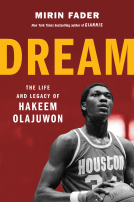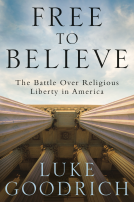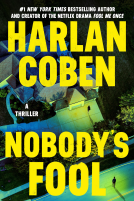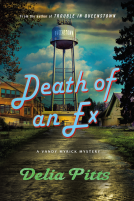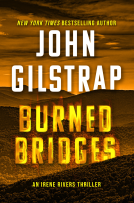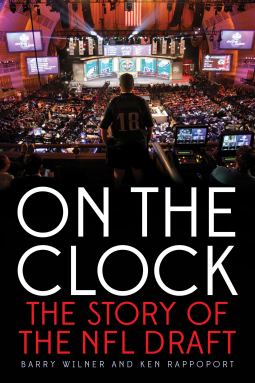
On the Clock
The Story of the NFL Draft
by Barry Wilner and Ken Rappoport
This title was previously available on NetGalley and is now archived.
Send NetGalley books directly to your Kindle or Kindle app
1
To read on a Kindle or Kindle app, please add kindle@netgalley.com as an approved email address to receive files in your Amazon account. Click here for step-by-step instructions.
2
Also find your Kindle email address within your Amazon account, and enter it here.
Pub Date Apr 01 2015 | Archive Date Apr 06 2015
Rowman & Littlefield | Taylor Trade Publishing
Description
Yet the draft has become more popular than many other sporting events, including the National Basketball Association (NBA) and National Hockey League (NHL) playoff games, against which it goes head-to-head for viewers. In fact, the draft has spawned its own cottage industry in which names such as Gil Brandt, Mel Kiper, Jr., and Mike Mayock become as well-known as any of the first-round selections.
In On the Clock, Ken Rappoport and Barry Wilner chronicle the history of the proceedings. The veteran sports writers take you from the first grab bag in 1936, when Philadelphia chose Heisman Trophy winner Jay Berwanger of the University of Chicago and saw him decline to play in the NFL, to the 2014 draft—considered one of the deepest in talent ever.
Along the 78-year journey, learn about the competitions for the top overall spot (Peyton Manning vs. Ryan Leaf), the unhappy No. 1s (John Elway and Tom Cousineau), the big flops (JaMarcus Russell) and the late-rounders-turned-superstars (Tom Brady).
Meet the draft wizards, from Paul Brown to Bill Walsh and Jimmy Johnson. And the draft whiffs that cost personnel executives their jobs.
On the Clock takes you behind the scenes at one of pro football’s yearly major events.
Barry Wilner has been a sportswriter for the Associated Press since 1975. He has covered virtually every major sporting event, including twelve Olympics, nine World Cups, twenty-six Super Bowls, the World Series, and the Stanley Cup finals, and has written thirty-nine books. He lives in Garnerville, New York.
Ken Rappoport is the author of more than sixty sports books for adults and young readers. Working for the Associated Press in New York for thirty years, he has written about every major sport. His assignments included the World Series, the NBA Finals, and, as the AP’s national hockey writer, the Stanley Cup Finals and the Olympics. He lives in Egg Harbor Township, New Jersey.
A Note From the Publisher
You are reviewing uncorrected page proofs. Quote only from finished book. Contact publicity@rowman.com with questions. Thank you!
Advance Praise
A
compelling look at NFL history through the draft, which has become, for
many fans, more important than any single game outside the Super Bowl.
Wilner and Rappoport weave compelling little-known facts into the
brilliant moves, the blunders, and many of the oddities of the draft
process. Informative and a wonderful read.
— Dave Goldberg, former AP NFL writer and Hall of Fame Committee member
Available Editions
| EDITION | Paperback |
| ISBN | 9781630761011 |
| PRICE | $17.95 (USD) |
Links
Average rating from 14 members
Featured Reviews
The NFL Draft is one of the most exciting television events and I look forward to it every year. Who will be the first pick and how do teams decide who to pick? Will the first pick overall be a draft diamond or a bust?
If you love the NFL as much as I do, you'll love this in-depth history of the NFL Draft. You get a behind the scenes peek into the very first draft in 1936 to the 2014 draft. You'll see why Bill Walsh and Jimmy Johnson are considered draft kings. You'll also get to know some of my favorite draft gurus including Mike Mayock.
This also makes a perfect Mother's / Father's Day gift for the die-hard football fan!
 Librarian 129054
Librarian 129054
An entire book on the NFL Draft, past and present, I was intrigued, but wasn't sure what sorta shape it was going to take. Was it going to be a big honking list of choices, maybe a little annotation with each name, or was it going to be prose like? I was so very happy to see that it was the latter and not the former. Honestly I didn't know that I wanted to know all the stuff about the draft that was in this book until I read it.
It was so chock full of information I'm not sure what I liked best. I liked reading about the 2014 draft, mostly because it was the most recent. I also liked the stories about the uncommon drafts and draft picks, and learning about Kiper and those other draft gurus was cool too.
And of course there was the history of the Draft too. I knew absolutely none of the history and that stuff was very cool.
One thing that I didn't like about the book was that there seemed to be a lot of subtle Bill Belichick bashing in it, which bummed me out. Really, a line implying Belichick has no emotions is really needed? I don't think so.
I got this advanced galley through Netgalley on behalf of Rowman & Littlefield.
Review: For some professional football fans, the day when all 32 pro teams hold the annual draft of college players is just as big a day as Super Bowl Sunday. The television ratings for the draft are higher than basketball and hockey playoff games on that day. The action is really non-existent – just men talking about the players interrupted by walks to the podium so a player just chosen can shake hands with the commissioner and show off his new team’s jersey.
So why is this event so popular? The answer to this and other questions about the NFL draft is revealed in this entertaining book by Barry Wilner and Ken Rappaport. The book starts off with drama at the 2014 draft – who is going to select Johnny Manzeil? What are the Cleveland Browns doing with these trades? Not only did the authors take the reader inside this draft, they presented the comings and goings in a manner that would make the reader think he or she is reading about a reality TV show. Which, later in the book, is a reason given for the huge popularity of the draft.
The book also gives the history of the draft, which was the brainchild of Bert Bell before he became commissioner of the NFL. There are stories about the best draft choices, the worst, and how some men used the draft to their advantage to build winning football teams. As a reader, I enjoyed most of these stories. I felt that too much of the history section was devoted to the history of the Bell family that had little to do with the draft. It is like when reading a fictional book that starts off exciting, gets a little boring in the middle, but later gets even better.
I make that comparison for this book because my favorite section was when the writers describe how the draft went from simply something to put on the air in the early days of ESPN to the glamorous, dramatic TV show it is today. I also liked the short biographies on four men who are considered to be the best in analyzing the draft and the players taken: Mike Mayock, Mel Kiper, Gil Brandt and Joel Buchsbaum – the “Gurus” as the chapter states.
The only drawback to the book in my opinion is the best and worst picks for each team. Not because I disagree with many of them – any list of “best” or “worst” will be debated – but because I thought that there wasn’t enough reasons given why the authors believed this was so. Take the San Diego Chargers – okay, it’s easy to see why Ryan Leaf was the worst player they ever selected, but give me more of a reason why Dan Fouts is the best other than he is in the Hall of Fame. He is not the only player for the Chargers who has made it.
Overall, this was a decent book with interesting and entertaining stories on some of the more famous players selected and the event itself. Football fans will enjoy reading this book which is very good at the beginning and toward the end, with some softness in the middle.
I wish to thank NetGalley and Taylor Trade Publishing for an advance review copy of the book in exchange for an honest review.
Pace of the book:
This is a quick read as it took me less than two hours to finish the book. The stories and reporting are all written in small segments, which made reading it quickly even easier.
Do I recommend?
Readers who are football fans will enjoy this book and those who are among the many who cheer just as loudly for a draft pick by their favorite team as a touchdown will especially enjoy this.
The NFL has become a year-round American sporting obsession. No longer content to simply enjoy the games on the field, we’ve become enthralled by the nature of the machinations off the field. And so now, sports fans spend much of the offseason thinking about football and what’s in store for their favorite teams and players.
The largest piece of that puzzle – the Super Bowl of the NFL offseason, in essence – is the NFL Draft. The explosive growth in the level of fandom has led to in-depth coverage of the draft on all levels, from the number-one overall picks to the annual Mr. Irrelevant (the last player selected). It’s obsessively covered for weeks in advance and relentlessly televised.
But how much do you really know about the past of the NFL Draft?
Authors Barry Wilner and Ken Rappaport offer up a primer with “On the Clock: The Story of the NFL Draft”. The book offers a two-pronged approach to your draft education, alternating between a discussion of the 2014 draft and a look back at the draft’s origins and its growth from necessary convenience to cottage industry.
Along with breaking down the 2014 draft and some of its storylines – Jadeveon Clowney as the first overall pick, the first round freefall of Johnny Manziel – “On the Clock” looks back at the draft’s beginnings as the process sprang from Philadelphia Eagles owner Bert Bell’s desire to keep the richest of the league’s teams from gaining an unfair advantage through their money. The draft was designed to give the lesser teams a chance to land better players and improve themselves by doing so.
The authors include some of the legendary figures when it comes to the draft – personnel guys like Gil Brandt and broadcast draftniks like Mel Kiper Jr. and Mike Mayock – which gives a nice sense of the stakes involved. They also include lists of the five all-time best and worst draft selections by position.
“On the Clock” offers a nice entry into learning about the NFL Draft. The juxtaposition between the present and the past offers some welcome perspective. However, it sometimes seems that the 2014 draft analysis – while welcome – is perhaps too prevalent. The historical info and expert context is far more likely to hold up. With the next draft rapidly approaching, it’s already on the verge of becoming old news. It’s not that it’s bad; it’s that there’s too much of it.
Meanwhile, the historic and contextual stuff will engage any avid football fan. The story of how the draft came to be covered in the media – and how that evolved from a few hours of coverage in the early 1980s to the weeks-long multimedia feeding frenzy that is the draft today.
Wilner and Rappaport are both longtime Associated Press writers – and it shows. There’s a straightforwardness to their recounting that feels very reportorial; frankly, it’s a bit refreshing considering the breathlessness and hyperbole of most NFL-related writing. There are tiny pockets of clunkiness and occasional repetitions, but for the most part, the book is a quick and informative read.
So with the 2015 NFL Draft almost upon us, it’s a great time to have a look back at one of the fundamental keys to the league’s long-term viability. “On the Clock” gives you just that – a snapshot look at the NFL Draft’s history, its function and some of the people who have built their lives around it.
 Pat L, Reviewer
Pat L, Reviewer
This book about the pro football draft takes you back in time to when Bert Bell, who owned the Eagles and felt that he was at a disadvantage when it came to signing players. The dominate teams of this time were the Chicago Bears, Green Bay Packers, Giants, and Redskins. To make the league competitive Bell believed the only way to keep the NFL successful was for all teams to have an equal opportunity to sign players that were eligible. At the league meeting in 1935 he proposed a draft and the order of selection would be the last place would pick first and so on. His proposal was adopted that day and the first draft was held in 1936. The book then goes into the first draft with some of the players and trades. The first player drafted was Jay Berwanger who was the winner of the Heisman Trophy that year, but the award was called Downtown Athletic Club. He was also the first winner of this award. He was drafted by the Eagles and his rights were traded to the Bears, but he never agreed on a contract and never played pro football. He then goes into a couple of early great players that people don’t talk about any more. One being Sid Luckman, who played Quarterback for the Bears during the 40’s and still to this day holds the most passing records for Bears QB’s. He was also the quarterback for the most points scored in a championship game 73-0 over the Washington Redskins. Luckman was a first pick for them in 1939 and they would win 4 titles with him. Another player he talks about is Sammy Baugh, first pick for Washington in 1937, and they would win the championship in 37 and in 42 he also is the only player to be an All – Pro at three positions in the same year, quarterback, defensive back, and punter. He intercepted more passes that year than he had thrown. The draft really doesn’t change until 1980 with ESPN, coming on board and they start televising the draft and a man by the name of Mel Kipper Jr. is one of their go to guys. The book goes into who he got the job and how he and some other guys were doing mock drafts years before but when asked by teams or television they could not or would not go on TV, Mel Kipper had the presence to see ESPN as a way to take what he was doing as a hobby and get paid for it. Then people started to come out against some of his choices and that actually made him more popular. The book then takes you to what we have now a three day show prime time and it is being talked about it seems all year long. A good book on the beginnings of the football draft to where it is now.
Readers who liked this book also liked:
Pamela Samuels Young; Dwayne Alexander Smith
Multicultural Interest, Mystery & Thrillers, Romance

